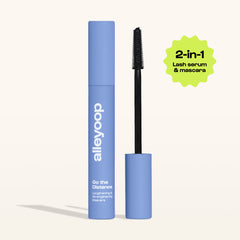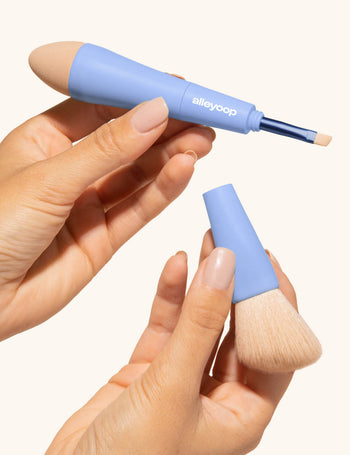Dry vs Dehydrated Skin 5 Key Differences

You’ve heard of dry skin, you’ve dealt with dry skin, and depending on where you live, it may be an annual pain you have to deal with each winter. But did you know there was such a thing as dehydrated skin? If your skin isn’t filled with enough moisture, it can come dehydrated and create side effects all of its own.
Though “dry” and “dehydrated” sound very similar, they are actually two different things. That means they cause different side effects and should be treated in different ways.
Take a look at these key differences, how you can avoid them, and what to do if your skin is suffering from one of these ailments.
Underlying Cause of Dry Skin
The biggest difference between dry and dehydrated skin is the cause behind the symptom. Knowing what causes these key skin issues can help you prevent them in the future and avoid uncomfortable or unsightly side effects.
Knowledge is power, and understanding what steps to take can help you put your best face forward at all times. See how you can improve the health of your skin with hydration options in order to look fresh and healthy at all times.
Dehydrated Skin
Dehydrated skin takes place when your body doesn’t have enough moisture. If you haven’t been drinking enough water or are dehydrated yourself, your skin can also become dehydrated.
This is most likely to happen if you are sick, have been working out (without rehydrating), are, or if you’re hungover. (It happens! Especially as you age, drinking too much can seriously dehydrate your skin.)
Either way, dehydrated skin doesn’t look or feel good. Try to avoid it whenever possible!
Aging is another key cause of dehydrated skin. Therefore, creating good skincare habits sooner rather than later can help keep your skin moisturized, even as you continue to age. In addition, proper skin habits can also help you to reduce the drying signs of aging skin.
Learn more below when we talk about the best ways to eliminate or cure dehydrated skin.
Dry Skin
Dry skin takes place for a very different reason: when your skin is low on oils. There are healthy oils that help keep your skin at the right consistency. When those oils are too low, your skin becomes dry.
This can happen in a few various situations or with a combination of all of them.
Dry skin is more likely to take place in areas of low humidity, in winter when there is less moisture in the air, if you are dehydrated and unable to produce oils, or if there is heat or a fireplace in your home or office. Electric heat is especially guilty of zapping moisture to the air, further drying out your skin.
When all of these factors occur, the effects are only that much more severe.
The Symptoms They Cause
Another key difference between dry and dehydrated skin is the symptoms that they cause. Having a lack of moisture vs. a lack of oils in your skin can do different things. Take a look at the side effects to have a better idea of what’s going on with your skin and how you can help treat it from the inside out.
Dehydrated Skin
If you’re suffering from dehydrated skin, you will most likely notice differences in your face. You could have dark circles under your eyes, wrinkles that are more prominent than normal, and overall look ashy and sullen. In other words, you likely aren’t looking your best.
If you’re unsure if your skin is dehydrated, pinch your cheek. Well-hydrated cheeks will bounce back immediately. A dehydrated cheek will show a dent, even if very slightly. You will likely have other signs of dehydration throughout your body.
Dry Skin
Meanwhile, dry skin will have its own side effects. Dry skin is itchy, flaky, and just plain uncomfortable. If your skin catches on your clothes, this means that it is likely dry underneath.
Treating Dry and Dehydrated Skin
Another key difference between dehydrated and dry skin is how you treat them. Take a look at these methods to see how to best cure your skin based on your symptoms.
Dehydrated Skin
If your skin is dehydrated, there are a few very effective ways to help bring moisture back into your skin. Start by drinking more water. Your skin hydrates from the inside out, so consuming more fluids can help rehydrate and plump your skin.
If plain water isn’t your thing, you have plenty of options.
Try fruit to help add flavor to your water. You can also try liquids with electrolytes or low sugar. In any case, avoid fluids that could zap your body from its liquid. Sodas and other high-sugar drinks are notorious for pulling fluids from the body. Opt for something more hydrating instead.
Next, moisturize that skin!
Add our Smooth Operator ultra-hydrating body lotion to your routine. Then, continue to moisturize daily, especially on your face.
Both of these methods can help keep your face more moisturized and hydrated, even when your body is running low on fluids.
Dry Skin
If your skin is dry, make sure to add moisturizer and drink more fluids. Both of these methods can help your skin produce more of its own natural oils. Adding lotion can instantly ease ashiness and help relieve itching.
However, they aren’t the only ways in which you can help relieve dry skin.
You should also help hydrate your environment, whether at home or work. When air is dry, it zaps the moisture right from your skin. Use a humidifier to add moisture back into the air. You can also add a gauge to see how much moisture is in the air – ideal ranges are between 40-60 percent.
Too low, and your skin is dry (among other health concerns). Too high, and you could have oily, sticky skin.
Remember that air is most likely to become dry in winter conditions, certain climates, and when you are running a heater or fireplace. All of these conditions combined can bring humidity levels to uncomfortably low conditions.
Long Term Effects
Over time, ailing conditions of your skin are bound to cause issues of their own. Finding and helping to heal your skin sooner rather than later can keep these side effects from taking hold and causing further problems to your skin.
Dehydrated skin can age faster than it should.
Without enough moisture to keep skin fresh and firm, it can develop more wrinkles, dark spots, and a tendency to sag. All of this can be further prevented by introducing more fluids to your daily routine.
Dry skin can cause scars or lasting marks on your skin. Yikes! If you get a cut or any other injury on dry skin, your body will have a harder time healing the damage. What’s more, is that you’re more likely to cause damage to your skin by scratching or even by accident.
Without the proper amount of moisture, it’s difficult for the skin to bounce back as it should.
Avoid letting your skin become overly dry or dehydrated to avoid these unsightly side effects. With a few simple steps, you can help keep your skin healthy, happy, and fresh all year long.
What They Take Away
You should also consider what you can gain from your skin when it’s healthy and moisturized properly. It’s a simple way to keep yourself looking fresh-faced and perky, even before you start your makeup routine for the day.
That’s why it is essential to keep your skin moisturized. Now’s the time to take a look at what dry and dehydrated skin can take away from your overall look.
Dry Skin Takes Away
Dry skin takes away your skin’s own ability to make and produce oils. That means uncomfortable itching, sure. But it also means you’ll be left behind with an ashy and pale appearance.
No matter how hard you’ve been working on that tan, if your skin is too dry, you simply won’t glow as you could.
Dehydrated Skin Takes Away
Meanwhile, dehydrated skin is a form of evil itself. It takes away your ability to look great and fresh-faced. Ugh!
Dehydrated skin is sullen and dull. It causes dark circles under your eyes and spots around the rest of your face. Not to mention, it makes wrinkles and creases appear more pronounced.
In other words, dehydrated skin can make you look older and more severe than a hydrated version of yourself. It’s a side effect that’s easy to avoid, luckily!
Boost Healthy Moisture
Lack of moisture can cause havoc within your skin for two main reasons: dehydration and dryness. Though they are different in nature, some of the same treatment options work for both, including drinking more water, moisturizing your skin, and more. In addition, you can add a humidifier to your home or office space to help keep your skin less dry.
While these dry skin issues may be uncomfortable, they can also be unsightly. But it can also cause you to itch — a constant feeling of discomfort.
Meanwhile, if you’re dehydrated, skin can look dull, obtain dark spots, and create deeper, more creased wrinkles. This is due to a lack of plumpness within your skin. If you’re looking older or more sullen than usual, consider adding some moisture to your skincare routine to help quench your parched skin’s needs.
Conclusion
Pay attention to your skin and learn what it’s trying to tell you. Listening to its needs can help your skin remain healthy, comfortable, and look its best.
To learn more about taking care of your skin, consider building your ideal skincare routine – not only for your face but for the rest of your body as well.
To learn more about your skincare options, join the #AlleyoopTroop and check out Alleyoop today!
Sources:
Skin Penetration Enhancement by Natural Oils for Dihydroquercetin Delivery | NIH


















































